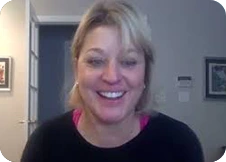Mortgage insurance is a crucial aspect of home financing, and it’s important to grasp its ins and outs. This comprehensive blog will provide a concise overview of mortgage insurance, its types, costs, and how to avoid it.
Whether you’re a first-time homebuyer or looking to refinance, this guide will equip you with the knowledge to make informed decisions about this insurance and help you navigate the home loan process with confidence.
Find Mortgage Lenders Near You



Find Mortgage Lenders Near You




Find Mortgage Lenders Near You
View 139+ Lenders in the US
Find Mortgage Lenders Near You
View 0 Homes For Sale in the US
Where do you want to live?
What is Mortgage Insurance?
Mortgage insurance is a policy that protects lenders in case borrowers default on their home loans. Lenders require a loan insurance when borrowers make a down payment of less than 20% on a home purchase.
It covers a portion of the lender’s losses if the borrower fails to repay the mortgage. This insurance enables lenders to offer loans with smaller down payments and reduces their risk.
Borrowers typically pay monthly premiums that are added to their mortgage payments. Once the borrower’s equity in the home reaches 20% or more, they may be eligible to cancel the insurance policy.
What’s the Cost of Mortgage Insurance?
The cost of insurance varies depending on several factors. These factors include the loan amount, down payment, and credit score of the borrower. Typically, it ranges from 0.5% to 1% of the loan amount annually.
For instance, on a $200,000 loan, the cost can range from $1,000 to $2,000 per year. Mortgage insurance premiums are often divided into monthly payments and added to the borrower’s loan payment. The specific rate is determined by the mortgage insurer based on the assessed risk factors.
Borrowers with higher risks, such as lower credit scores or smaller down payments, may face higher premiums. It is advisable to consult with lenders to obtain accurate cost estimates for insurance based on individual circumstances.
How is Mortgage Insurance Calculated?
The calculation of mortgage insurance involves considering several factors. Lenders calculate the loan-to-value ratio (LTV) by dividing the loan amount by the appraised value of the property. This ratio helps determine the level of risk associated with the loan.
A higher LTV generally leads to a higher loan insurance premium. The borrower’s credit score is also taken into account during the calculation process. A lower credit score often results in a higher premium.
Mortgage insurers assess the overall risk based on the LTV, credit score, and other relevant factors to determine the specific insurance rates. The actual cost of insurance is then calculated by multiplying the loan amount by the mortgage rate.
What are the Different Types of Mortgage Insurance?
There are three primary types of insurance:
1. Private Mortgage Insurance (PMI)
Private insurance companies provide PMI, which is required for conventional loans when the borrower’s down payment is less than 20% of the home’s purchase price. Borrowers pay PMI premiums and these are added to their monthly mortgage payment.
2. Federal Housing Administration Mortgage Insurance (FHA MI)
The Federal Housing Administration (FHA) backs FHA loans, which require FHA mortgage insurance. Borrowers with an FHA loan must pay FHA MI upfront and as part of their monthly mortgage payment. FHA MI enables borrowers with lower credit scores and smaller down payments to qualify for a mortgage.
3. Department of Veterans Affairs Funding Fee (VA Funding Fee)
VA loans, available to eligible veterans and active-duty military members, have a VA funding fee instead of traditional mortgage insurance. This fee, intended to fund the VA loan program, can be added to the loan amount or paid upfront.
It’s essential to consult with lenders or mortgage professionals to obtain specific information based on loan type and individual circumstances.
How to Avoid Mortgage Insurance?
To avoid this:
- Make a larger down payment: Save and contribute a larger down payment, ideally 20% or more of the home’s purchase price.
- Explore lender-paid mortgage insurance (LPMI): Some lenders offer LPMI options where they pay an insurance premium in exchange for a slightly higher interest rate.
- Consider piggyback loans: Instead of a single mortgage, opt for two loans – a first loan covers 80% of the home’s value and a second loan for the remaining amount, thereby avoiding it.
- Look into VA or USDA loans: If eligible, consider VA loans for veterans and active-duty military members or USDA loans for homes in designated rural areas. These loans often have no loan insurance requirement.
- Improve credit score: Work on improving your credit score to qualify for a conventional loan without insurance.
- Negotiate with the lender: Depending on your financial situation and the loan terms, you may be able to negotiate to waive loan insurance or secure a lower premium.
It’s crucial to consult with lenders and mortgage professionals to explore the best options for your specific circumstances.
Find Your New Home With Houzeo
With thousands of property listings, Houzeo.com is one of the biggest property listing sites in the US. Find condos, townhouses, co-ops, and other types of homes for sale on Houzeo.
Find Your Dream Home 🏡



Find Your Dream Home 🏡




Find Your Dream Home 🏡
View + Inspectors in the US
Find Your Dream Home 🏡
View 17,112,452 Homes For Sale in the US
Where do you want to live?
» Need More Clarity? Read these exclusive Houzeo reviews and learn why the platform is the best in America’s competitive housing market.
More mortgage-related blogs for you!
» Mortgage Protection Insurance Explained: Do You Need It?
» What is Mortgage Amortization: How your mortgage payments work?
» Mortgage Preapproval: What it is?
Uncategorized












.webp)
